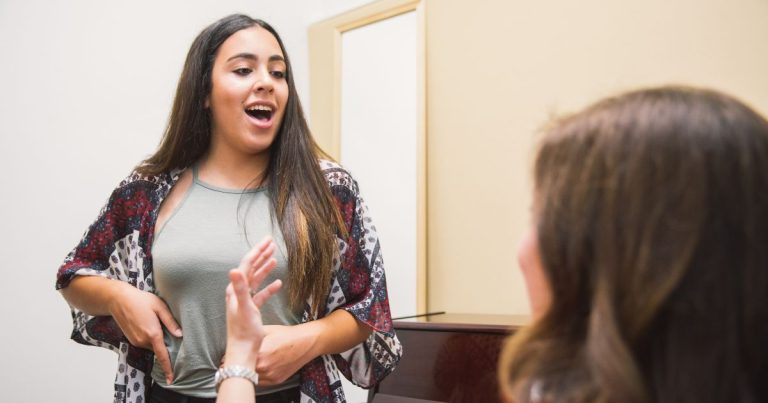Whether it’s out of sheer curiosity or for health reasons, there can be real benefits to measuring specific aspects of a singer’s voice.
As Kaya Herstad-Carney explains on the Singing Teachers Talk podcast: “Mostly teachers trust their ears and eyes and encourage their students to listen to their bodies. But if in doubt, check it out.”
Here’s a list of four ways to measure a student and the possible reasons for doing so.
Vocal range
How to measure: “Firstly, I would ensure the student is warmed up,” Kaya says. “Then I’d start from middle C and, depending on the student’s tendencies, either go down first or up first. And I would do it on a combination of syllables and SOVTs.
“Generally, I’ll go in one and a half scale to first do my own assessment in my head. And then, I will do five tone going down. Up, I would do something with a bit more of a jump so that you can see what’s going on technically.”
Useful for: Helping a singer understand their own voice and voice type. Also, students may need to specify their vocal range on their Spotlight casting profile.
Lung capacity
How to measure: “I like getting them to count three in and three out on a breath with resistance,” Kaya says. “And then I get the student to take that on with a note under it to see whether the capacity is different when they sing compared to when they just breathe. You can see how long they can hold it or gradually build it up.
“If I’m working with a group of undergrad students, and I want them to self-assess their lung capacity, I get them to breathe in counting for a few seconds and breathe out counting for a few seconds adding three counts every time. I would go up to 30 or even further if working with more advanced singers.”
Useful if: A singer has some kind of lung inefficiency. This could be down to a short-term illness such as bronchitis or pneumonia, a long-term health issue such as long Covid, asthma or COPD, or habit.
Resonance
How to measure: Use a spectrographic app such as VoceVista to examine where the resonant frequencies are strongest.
Useful if: You want to optimise vowels and vocalisations. It’s excellent if you have an advanced singer interested in learning more about formats and harmonics.
“If I’m working with somebody at a high level, it’s useful for them to know their vocal tendencies,” Kaya says. “You can show them, ‘here’s more brightness, and here are the lower frequencies’. The fact that you can hear and see what’s going on helps them adjust things.”
Pitch
How to measure: Many apps are available to help singers monitor their pitch, such as Voice Pitch Analyzer and Vocal Pitch Monitor App.
Useful if: You’re working with trans students or any student struggling with pitch. Students who’ve had grommets or hearing difficulties may also benefit.
Learn more
Listen to the full interview with Kaya to learn more about:
- The physiological characteristics that influence the voice.
- The lamina propria.




